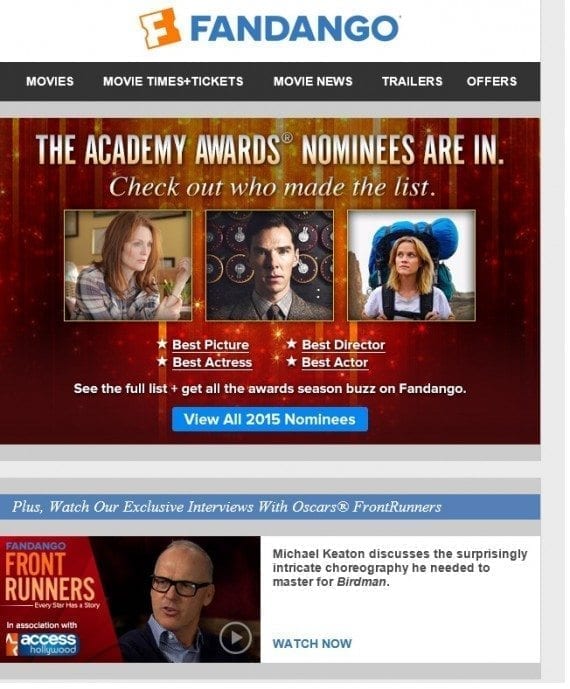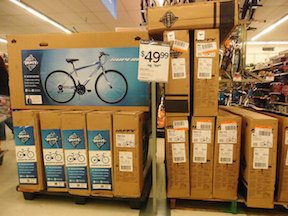Lead nurturing is a business-to-business marketing process to optimize a series of communications with a lead or prospect, to increase sales. The strategy for a successful B2B lead nurturing program can be modified and applied to ecommerce email marketing.
In this article, I’ll explore four lead-nurturing tactics to try for your ecommerce email program in 2015.
Strategically-timed Promotions
Timing is important for most email marketing campaigns. A well-timed email or promotion can mean the difference between converting a customer and losing a sale. The below example from Art Van Furniture uses a two-pronged approach to a successfully timed email promotion.

This email from Art Van Furniture provides opportunities to follow up after the promotion is over.
First, Art Van Furniture sent the email with adequate time prior to the one-day sales event, yet close enough that recipient wouldn’t forget about the sale. Secondly, anything that a recipient purchases on that day could be free if it snows three inches or more on Super Bowl Sunday. This allows Art Van the opportunity to send nurturing emails up to Feb. 1, to remind recipients of the promotion, and to send follow-up campaigns afterwards, depending on the outcome. The campaign is well executed because recipients will likely be engaged, knowing they could get reimbursed for their entire purchase.
Depending on the promotion, ecommerce businesses can establish a series of emails to take advantage of a deadline. Email recipients would likely stay engaged throughout the series. Since many people are procrastinators, a last-minute deadline reminder can often produce higher conversions.
Another well-timed email campaign, below, is from Fandango, the seller of movie tickets. Fandango deployed the email just hours after the Oscar nominees were announced — likely before recipients heard the news on the nominees, which created a sense of urgency to open, click, and read.

Fandango deployed this email shortly after the Oscar nominees were announced, creating a sense of urgency among recipients.
Product-specific Buying Cycle Campaigns
Ecommerce merchants are becoming increasing sophisticated with their email marketing and remarketing activities, often showcasing products or product categories that consumers recently browsed or abandoned in their carts. These programs are terrific at enticing shoppers to return to a website. But, still, a shopper may not purchase a product immediately. A lead-nurturing program can make a difference.
Consider sending an email plainly asking if a shopper is still looking for a specific product, or if she purchased the product elsewhere. For example, I recently browsed several sites for a bedding set. I chose one of the sites and made the purchase. Afterwards, I received follow-up emails from the original site I was shopping, but didn’t purchase from, showing similar products. But the emails did not apply to me. The original site should have asked me if I’ve purchased elsewhere, and why. This would have been valuable feedback for that site.
For customers that do purchase, merchants can often develop nurturing emails surrounding a group of products that share a specific lifecycle. For example, a retailer selling makeup could send reminder emails a set number of months after a purchase, asking if the customer are ready to re-order. This is especially easy to execute if you can group a large number of products around specific timeframes.
First-time Buyer Campaigns
Arguably the most important time to make a good impression on customers is after they have placed their first order. Confirmation and shipping notifications — as well as appropriate follow-up and customer satisfaction emails — provide the groundwork for repeat orders. A series of communications surrounding a first order is crucial in making customers feel valued.
Be creative. Even a simple ‘Thank you for your business” communication can also go a long way with customers. It is a good time to let them know more about your company and what you can do for them. Address new or special products or services. You have their attention, so use the opportunity to tell new customers something that they may gloss over later.
Reengagement Campaigns
Customers come and go for all sorts of reasons. Trying to earn old customers back can be a challenge, especially if you don’t know why they left in the first place.
A good starting point for an effective reengagement campaign is to survey lapsed customers. This may be difficult because lapsed customers will have lower response rates. Consider offering a $10 gift card or similar off their next order in exchange for their feedback. After you gather enough responses, produce a series of email communications to send to the lapsed customers.
Reengagement campaigns may be as simple as a strong offer, or more complicated, such as offering complementary products to their original purchase at certain time intervals. Regardless, setting up a nurturing program for lapsed customers will ensure you are maximizing your email database.




